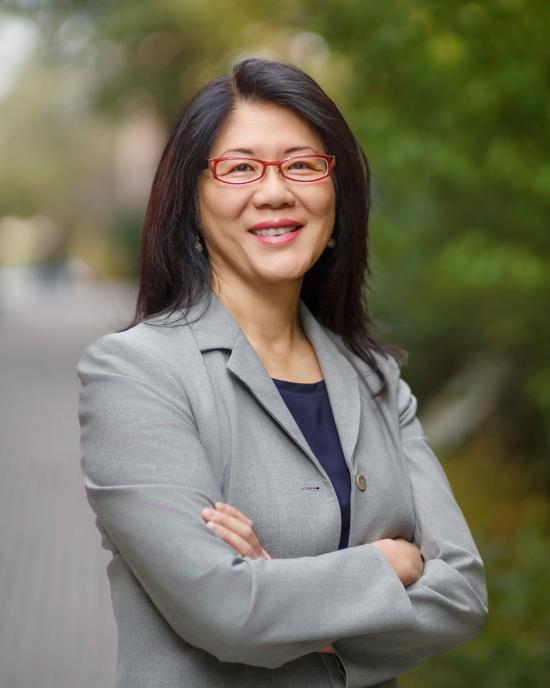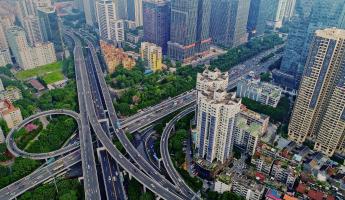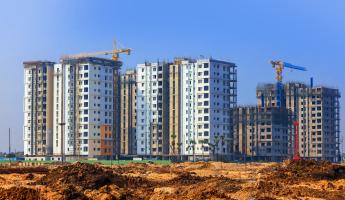Note: Yale School of the Environment (YSE) was formerly known as the Yale School of Forestry & Environmental Studies (F&ES). News articles and events posted prior to July 1, 2020 refer to the School's name at that time.
In the years after the Intergovernmental Panel on Climate Change (IPCC) released its last assessment report, in 2006, a few scientists not involved in writing the reports made the case to the UN-based organization that future reports should pay closer attention to the potential of cities and urban settlements to mitigate climate change.
One of those voices was Karen Seto, professor of urbanization and geography at the Yale School of Forestry & Environmental Studies (F&ES), whose research focuses on understanding the contemporary patterns of urbanization and their environmental impacts.
The crowning achievement of her six-year effort to add this new focus — which began with an IPCC Scoping Meeting in 2009, when the chapter outlines for the latest assessment report were produced — came this week. Working Group III’s contribution to the 5th Asessment Report, published on April 13, includes for the first time a chapter that explores options for mitigating greenhouse gas emissions in urban areas.
Seto was one of the two coordinating lead authors of the chapter, which is titled “Human Settlements, Infrastructure, and Spatial Planning.” The other is Shobhakar Dhakal of the Asian Institute of Technology.
Working Group III assesses mitigation strategies to reduce climate change.
“In the past, IPCC chapters have focused on mitigation from a sector perspective,” Seto said. “Urban areas and human settlements were examined through the lens of individual sectors, including transport, buildings, industries, waste management, and agriculture. In fact, many of our mitigation strategies have focused on these sectors.
One of those voices was Karen Seto, professor of urbanization and geography at the Yale School of Forestry & Environmental Studies (F&ES), whose research focuses on understanding the contemporary patterns of urbanization and their environmental impacts.
The crowning achievement of her six-year effort to add this new focus — which began with an IPCC Scoping Meeting in 2009, when the chapter outlines for the latest assessment report were produced — came this week. Working Group III’s contribution to the 5th Asessment Report, published on April 13, includes for the first time a chapter that explores options for mitigating greenhouse gas emissions in urban areas.
Seto was one of the two coordinating lead authors of the chapter, which is titled “Human Settlements, Infrastructure, and Spatial Planning.” The other is Shobhakar Dhakal of the Asian Institute of Technology.
Working Group III assesses mitigation strategies to reduce climate change.
“In the past, IPCC chapters have focused on mitigation from a sector perspective,” Seto said. “Urban areas and human settlements were examined through the lens of individual sectors, including transport, buildings, industries, waste management, and agriculture. In fact, many of our mitigation strategies have focused on these sectors.
Karen Seto will discuss her work on the latest IPCC report during the Fifth Annual Conference of the Yale Climate and Energy Institute on Thursday, April 17. She will speak at 4 p.m. in Kroon Hall.
“But cities are different because they are the place where you have a confluence of all these sectors. Thinking about mitigation from an urban perspective allows you to develop integrated strategies that might provide more effective results than thinking about the individual sectors separately.”
The IPCC reports are considered the authoritative reports on the current state of the scientific knowledge on climate change, and are the basis on which global climate change policy is determined. Earlier reports were issued in 1990, 1997, 2001, and 2006. There is a very careful process of selecting of the authors, who are chosen on the basis of their scientific contributions, their record of publications, and the research that they have done. There are typically two coordinating lead authors for each chapter, and they are ultimately responsible for the material in the chapters.
The IPCC reports are considered the authoritative reports on the current state of the scientific knowledge on climate change, and are the basis on which global climate change policy is determined. Earlier reports were issued in 1990, 1997, 2001, and 2006. There is a very careful process of selecting of the authors, who are chosen on the basis of their scientific contributions, their record of publications, and the research that they have done. There are typically two coordinating lead authors for each chapter, and they are ultimately responsible for the material in the chapters.
Thinking of the city as a whole will allow for more systemic mitigation strategies that bring more emissions savings than focusing solely on individual sectors.
After several years of work, the chapter’s writing team — which included engineers, planners, and economists — concluded that mitigation strategies are more effective when policy instruments are bundled and when land use and transportation planning are integrated.
“Infrastructure and urban form are strongly interwined, and together they set in place patterns of land use and behavior that are difficult to change,” Seto said. “Thinking of the city as a whole will allow for more systemic mitigation strategies that bring more emissions savings than focusing solely on individual sectors.”
One of the challenges in writing the new IPCC chapter, Seto said, was being comprehensive in the research assessed, since there has been such a surge in study worldwide. Two other complicating factors, she said, were the lack of precedent for the new chapter and the fact that none of the authors on the chapter team had experience with previous IPCC reports.
“There was no roadmap for the structure of the chapter, and we didn’t have the wisdom of experience. At the same time, there has been a lot of interest in this chapter,” she said. “Many countries are recognizing that urban-scale mitigation is where some of the most innovative mitigation strategies are being developed.”
One of the key messages of the chapter is that there is a window of opportunity, as much of the world’s urban areas will be developed this century and infrastructure lock-in and behaviors have not been set in place. “For established cities,” Seto said, “the key mitigation options lie in retrofitting their aging infrastructure and doing systemic improvements.”
In a report released on March 31, the IPCC Working Group II concluded that the effects of climate change are already affecting the planet’s natural systems and will pose an increasingly dire threat to human health, water supplies and food security.
“Infrastructure and urban form are strongly interwined, and together they set in place patterns of land use and behavior that are difficult to change,” Seto said. “Thinking of the city as a whole will allow for more systemic mitigation strategies that bring more emissions savings than focusing solely on individual sectors.”
One of the challenges in writing the new IPCC chapter, Seto said, was being comprehensive in the research assessed, since there has been such a surge in study worldwide. Two other complicating factors, she said, were the lack of precedent for the new chapter and the fact that none of the authors on the chapter team had experience with previous IPCC reports.
“There was no roadmap for the structure of the chapter, and we didn’t have the wisdom of experience. At the same time, there has been a lot of interest in this chapter,” she said. “Many countries are recognizing that urban-scale mitigation is where some of the most innovative mitigation strategies are being developed.”
One of the key messages of the chapter is that there is a window of opportunity, as much of the world’s urban areas will be developed this century and infrastructure lock-in and behaviors have not been set in place. “For established cities,” Seto said, “the key mitigation options lie in retrofitting their aging infrastructure and doing systemic improvements.”
In a report released on March 31, the IPCC Working Group II concluded that the effects of climate change are already affecting the planet’s natural systems and will pose an increasingly dire threat to human health, water supplies and food security.
Published
April 14, 2014



